EXCLUSIVE: AN expert report into the proposed cruise ship terminal at The Spit revealed 23 significant risk factors that could derail the project.
Sections of the PricewaterhouseCoopers Australia feasibility study were blacked out when it was released to the public by council in May last year, but can today be revealed for the first time by the Gold Coast Bulletin.
The redacted sections include a ‘risk register’ which details safety and cost concerns.
In it, the consultants write that cruise ship operators would be reluctant to include the Gold Coast in their itineraries unless the terminal is built with a protective breakwater.
TRUE COST AND BENEFITS OF CRUISE SHIP TERMINAL
The report also reveals the project off Philip Park could cost as much as $526 million with a second berth on its breakwater and that reasonable forecasts show it will not return a cash flow within 16 years.
The consultants red inked as a high risk the possibility of building the facility in stages, writing that it could stop cruise ship operators including Gold Coast in their travel plans.
They also found the following medium risks for the cruise ship terminal:
● Working in a wave zone may cause delays to construction and increased costs.
● Weather conditions lead to concerns about safety and cruise ship operators come to view the Gold Coast terminal as unsafe.
● Design challenges with moving more than 4000 passengers within one to two hours.
● Traffic congestion will worsen on The Spit creating delays for passengers.
● The breakwater has an impact on wave climate, which increases dredging to control sand movement off the coastline.
● Councillors disagree and no longer support it.
● The State Government refuses to support it, failing to tick off on necessary procedures like an environmental impact assessment, native title check and potential borrowing of funds.
● Council may not obtain State-owned land at Philip Park opposite Sea World for a building.
● The cruise ship industry does not commit to visits.
● Community groups seek an injunction preventing construction through Federation Walk and beach areas and raise concerns about access to the pier.
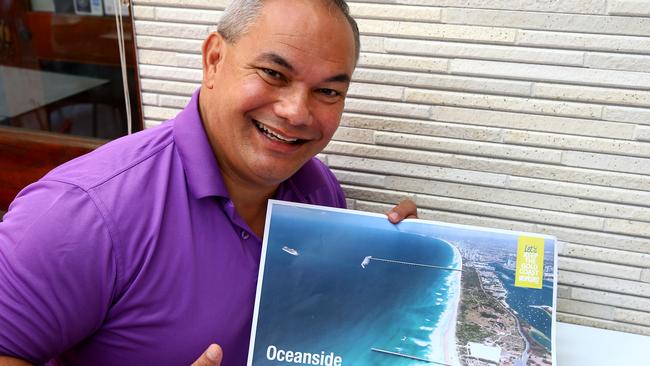
The consultants said that as part of their risk analysis they considered whether the jetty could be developed as staged infrastructure and whether it could be built more cheaply without a caisson breakwater.
“Through the testing it was established that a breakwater is required for ships to use the facility safely and the design of the breakwater was refined with additional information,” the report said.
Another key strategic risk is that the Government and council cannot resolve a common position to support the development of the project.

“Potential causes of this risk includes the State’s support for the Brisbane Cruise Terminal and lack of alignment on the development of cohesive master plan for The Spit,” the report said.
The Gold Coast Bulletin understands a stakeholder at a recent workshop for The Spit master plan provided a summarised version of the potential risk factors for the project.
“An officer told me that the Minister (State Development Minister Cameron Dick) didn’t have it (the report). I found that astonishing. It’s their land (that will have to be handed to council,” a stakeholder said.
The Gold Coast Bulletin asked Mr Dick’s office if council had ever provided State Development or the government with the PricewaterhouseCoopers Australia feasibility study, or if the Minister became aware of it after the workshops and had sought a copy.
Mr Dick was asked whether he or State Development had concerns about the project given the cost and safety concerns highlighted.
A State Development, Manufacturing, Infrastructure and Planning spokesperson said the council provided a copy of the business case to the Coordinator-General late last year as part of its application requesting the CST be declared a “co-ordinated project”.
“As with materials provided by any proponent to the Coordinator-General for the purpose of assessment, these materials are kept commercial-in-confidence within the office of the Coordinator-General who is an independent statutory authority,” the spokesperson said.
“The PwC document was not provided to the Department or the Minister.”
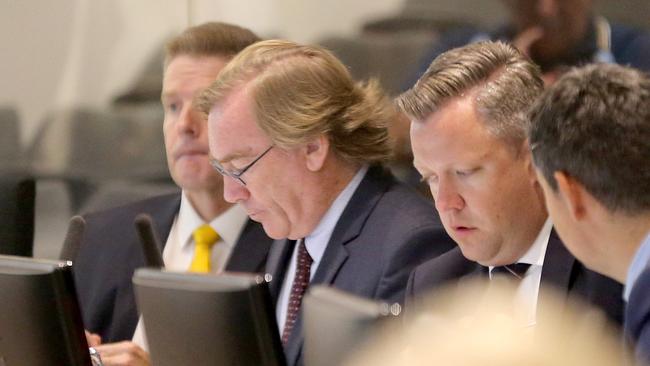
Asked if The Spit master plan and cruise ship terminal would be considered separately, the spokesperson said the master plan would consider implications of a terminal.
“The consideration of these matters during the master planning process does not imply State Government support for, or opposition to, these proposals,” the spokesperson said.
Decisions about the location and approval for the terminal would depend on a range of approvals from relevant agencies, including the Department of Environment, and these must be progressed separately by council, the spokesperson added.
FUTURE STEPS FOR THE SPIT
In March, after a council meeting, Mayor Tom Tate gave the State Government an ultimatum to tick off on his cruise ship terminal process or he would shelve it.
The Mayor suggested two locations — Philip Park or Doug Jennings Park at The Spit.
The Government responded by saying the CST had to be submitted through State Development and considered as a “co-ordinator” project.
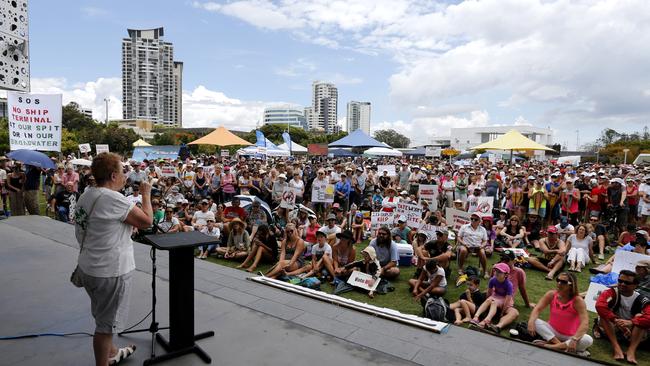
What should happen first, the Government maintains, is a masterplan for The Spit.
In August last year, the State Government announced work had begun on the masterplan. It will be an 18-month process.
Pop-up information sessions were held in February and March and workshops this month with stakeholders.
The CST at the most recent workshop became a talking point. Acting Mayor Donna Gates announced council’s support of it while some stakeholders produced evidence of its challenges.
In what is considered a critical development, the masterplan map includes not just the land on The Spit and Broadwater but extends out to the ocean covering the jetty area.
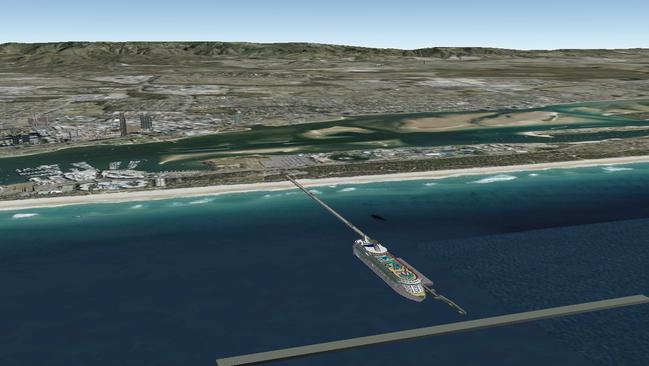
WHAT ARE THE BIGGEST CONCERNS OF CRUISE SHIP COMPANIES ABOUT A CST?
Consultants contacted representatives from Australian and international cruise lines including Royal Caribbean, Carnival Cruises and Ponant Cruises.
Here are the key findings:
— The Gold Coast is seen as a desirable transit port as long as it can be proven to be safe, reliable and cost effective.
— Major operators remain focused on the Brisbane International Cruise Ship Terminal. It is close to an international airport, supported by the State Government and located in a port environment.
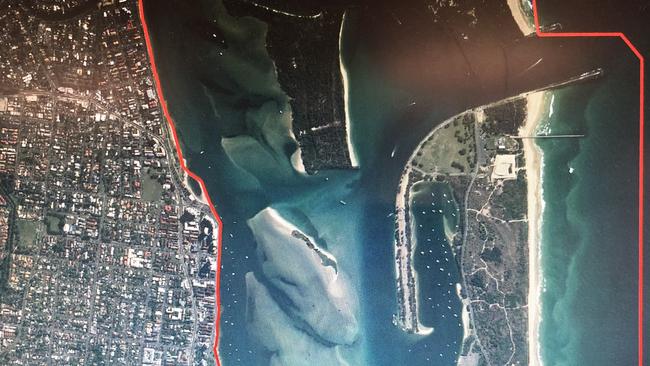
— Cruise operators and ships captains were asked about transit and base ports, and the key is certainty that the facility will be available when they want to use it.
— The port needs to be all-weather access and safe for loading passengers and supplies in all wave conditions.
— Cruise operators raised several concerns about the design for the Coast terminal because it is in the open ocean, not a harbour.
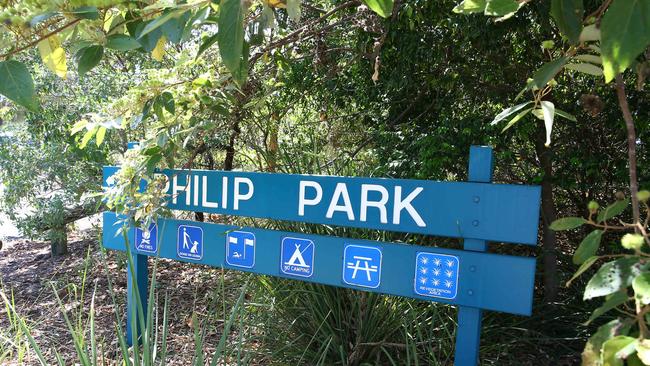
— An exposed jetty on a lee shore with no wind protection and no wave protection if a breakwater is not included “is unusual for cruise operators with limited international precedent”.
- The prevailing wind is from the south and south east, and if a ship encounters problems it could be pushed to shore, particularly when it attempts to dock.
— Concerns were voiced that docking in exposed conditions could see the winds push the ship off or onto the berth.
The consultants concluded that further studies were needed on the feasibility of the facility, and that these “would require care to ensure the objectivity of the results”.
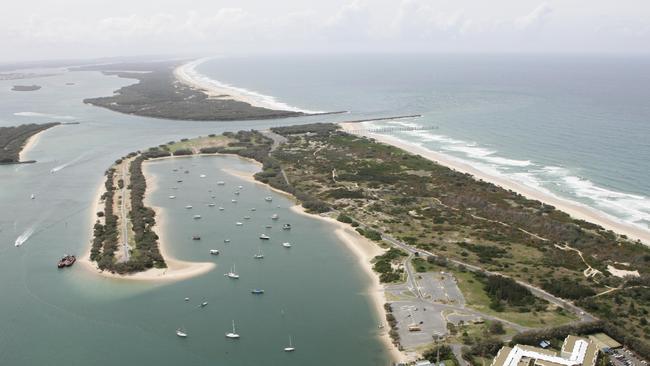

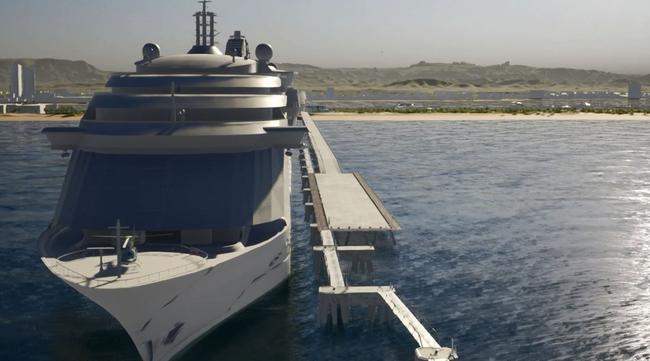
Add your comment to this story
To join the conversation, please log in. Don't have an account? Register
Join the conversation, you are commenting as Logout
OPINION: How GC can ‘maximise every opportunity’ ahead of 2032
The Gold Coast must capitalise on early investments in public transport, community venues, new tourism experiences, enhanced tertiary education and leading-edge technology, writes Tom Tate
‘Golden opportunity’: Why this is our most important two years
The Gold Coast faces its most important two years this century - and must extend light rail south of Burleigh and clarify its identity before the 2032 Games, a leading demographer says.